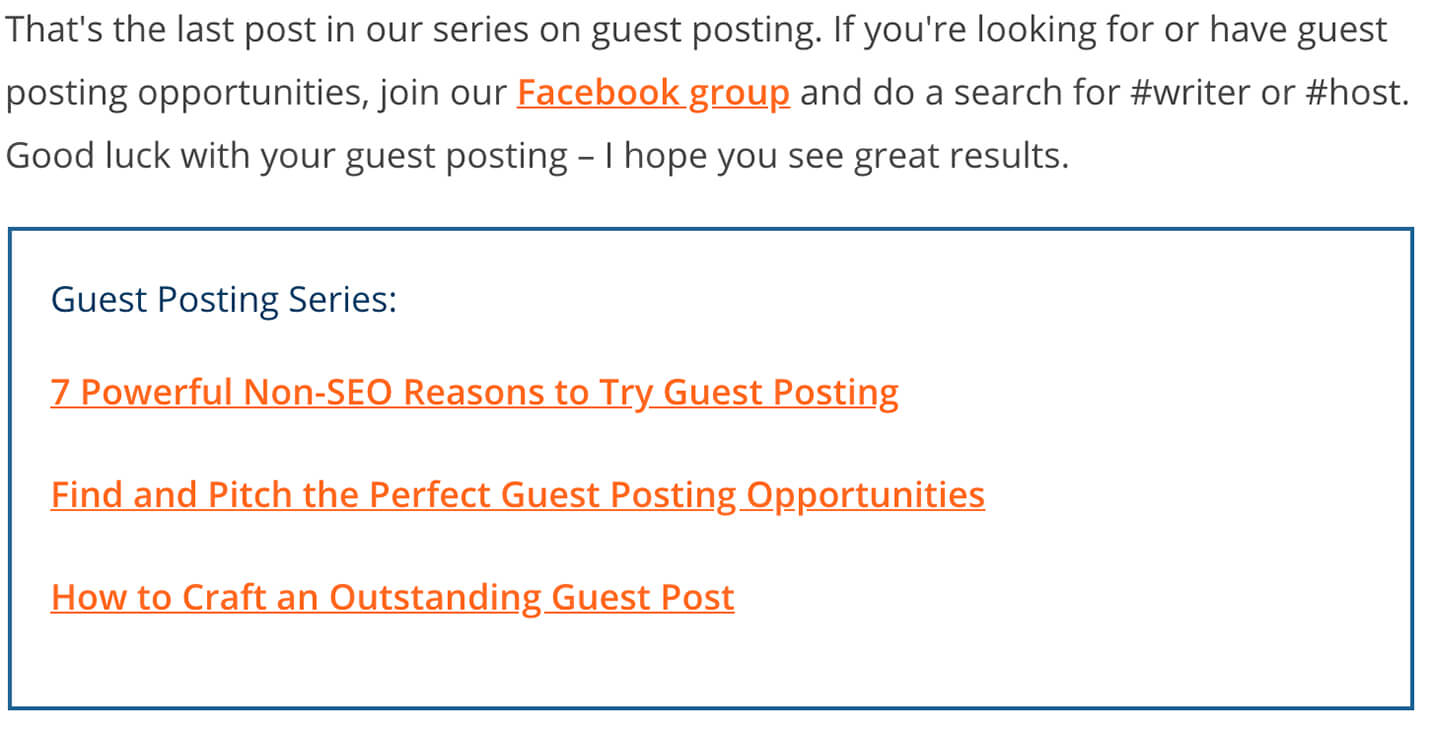ProBlogger: How to Write a Series for Your Blog (and Why You’ll Want To) | |
| How to Write a Series for Your Blog (and Why You’ll Want To) Posted: 18 Apr 2018 07:00 AM PDT
Have you ever written a series of posts for your blog – a set of posts that are deliberately linked together? If you haven't, I hope I can convince you to give it a try. Some bloggers feel writing a series of posts is more daunting than writing individual posts. But it's often easier to come up with ideas for a ten-post series than for ten standalone posts. Here at ProBlogger we've run a number of series over the years, including 31 Days to Build a Better Blog, which I'll be coming back to later in this post. So why should you write a series of posts instead of just individual posts? How a Series of Posts Could Boost Your BlogWriting a series of posts, even a short one, can be useful. In particular, it gives you the opportunity to:
Even if your blog is new, you can still run a series. In fact, it can be a great way to get some solid cornerstone content up there early on. Two Different Approaches to Running Your Series: Which is Right for You?When you look at a series of posts on the blogs you read, you'll probably find they fall into one of two categories: Type #1: Time-Limited Series of PostsThis type of series runs for a set period of time, and every post published on the blog during that time is (usually) part of the series. For instance, a three-part series of linked posts may appear on a Monday, Wednesday and Friday. And on the following week, the blogger goes back to standalone posts. We've done this on ProBlogger with 'Theme Weeks' such as Creating Products Week — a series of five blog posts on how to create products for your audience. This approach works well if you want to create cornerstone content, or build up a piece of series content you might use later for an ebook or even the basis of a course. (More on that later.) Type #2: Ongoing, Regular Series of PostsThis type of series can run indefinitely, with posts appearing on a specific day of the week or month, or even at a particular point in the year. And standalone posts appear as normal between installments of the series. The series might look like:
If you want to build a sense of consistency and community on your blog, this can be a good type of series to use. It can also help you beat blogger's block, as it gives you specific things to blog about. (Well, at least some of the time.) Coming Up With a Great Idea for a Blog Post SeriesIt can be tough enough coming up with an idea for one blog post. So how do you come up with a great idea for a series? For a fixed series with a limited number of posts, you might look for:
For a regular, ongoing series, you might look for:
If you've got several ideas and aren't which would work best, why not ask some other bloggers for input? (If you don't know many other bloggers yet, the ProBlogger Facebook group is a great place to meet some.) Structuring a Series of Blog PostsHopefully, you already feel confident about structuring individual blog posts. If not (or you need a quick refresher), check out these posts from our subject matter expert Ali Luke:
But when you're structuring a series, you also have to make structural decisions about:
Interlinking the Posts in Your SeriesIt's crucial to link the parts of your series together so readers can easily navigate between them. Remember, not everyone will read your series as you publish it. Some readers will be busy, and will want to catch up with the whole series later. But many more (hopefully) will come to your series in future weeks and months through search engines or social media. You can interlink posts in any number of ways. Here are some you can try. (You may even want to use two or three in each post.)
An example of links to all the posts in the series at the bottom of the post However you choose to link your posts together, make sure you're consistent. And remember to check back after finishing the series to see if there are opportunities to work in some extra links. Taking Your Blog Post Series FurtherOnce you've completed a series, or have been writing an ongoing series for a while, it's worth considering whether you can repurpose your series into something else. That might mean:
You might also use a short series as the inspiration for a longer one, or an ongoing series as an opportunity to get readers involved on your blog. I'd love to hear how you're using a post series, or what ideas you have for using them in the future. Leave a comment below to share your thoughts with us.
Photo Credit: JESHOOTS.COM The post How to Write a Series for Your Blog (and Why You’ll Want To) appeared first on ProBlogger. |
| You are subscribed to email updates from ProBlogger. To stop receiving these emails, you may unsubscribe now. | Email delivery powered by Google |
| Google, 1600 Amphitheatre Parkway, Mountain View, CA 94043, United States | |


0 comments:
Post a Comment